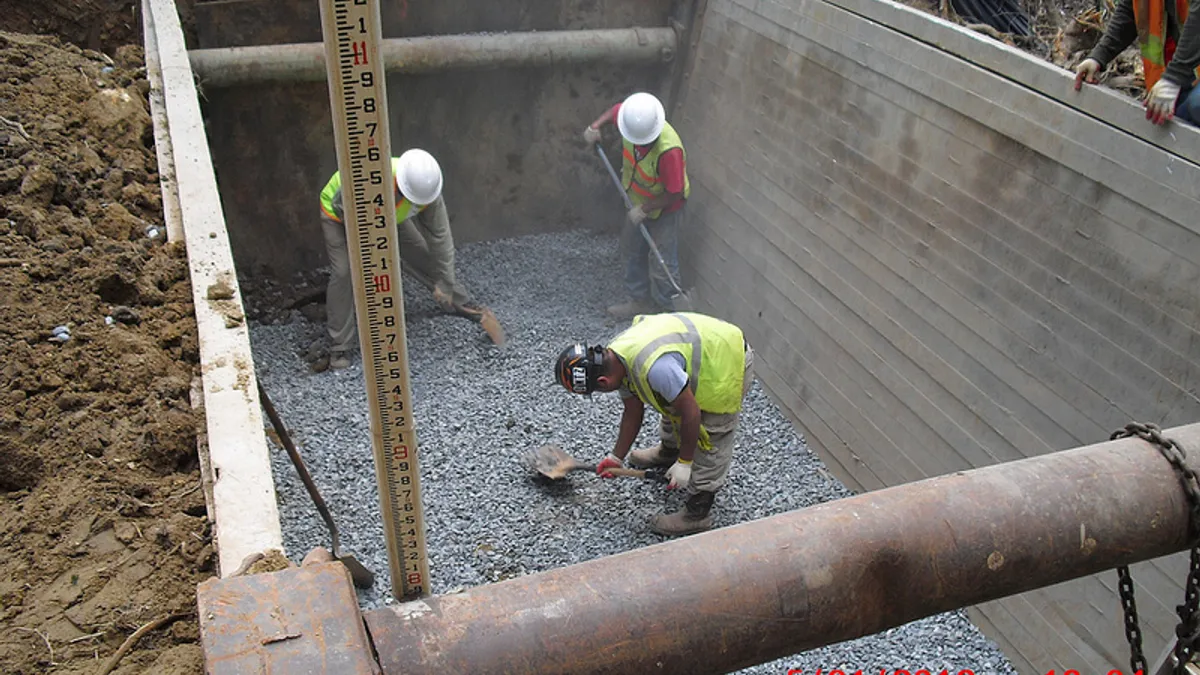Dive Brief:
- Effective Oct. 1, the Occupational Safety and Health Administration moved forward with an updated excavation and trenching National Emphasis Program. The safety enhancements represent a renewed effort on the part of the agency to prevent excavation and trenching collapses in the wake of an uptick in trenching fatalities.
- The program's goal has always been to make sure onsite trenching and excavation conditions are as safe as possible for workers, but the agency will now increase its education efforts and step up enforcement. In addition, OSHA inspectors will enter records of their trenching and excavation inspections into a national reporting system. Local OSHA offices will develop outreach programs as well.
- OSHA will wait to increase its enforcement activity until after the first three months of the initiative, during which time the agency will engage in education and prevention outreach. Inspectors will still respond to accidents, complaints, injuries and referrals during the outreach period. The updated program will remain in effect indefinitely. "OSHA will concentrate the full force of enforcement and compliance assistance resources to help ensure that employers are addressing these serious hazards," said Loren Sweatt, deputy assistant secretary of labor for occupational safety and health.
Dive Insight:
OSHA rolls out National Emphasis Programs on a temporary basis, although some, like the ones relative to construction cranes and lead, have been active for several years. The agency's goal is to concentrate its resources on particularly high-hazard safety issues for as long as necessary. The decision as to which areas need the most attention is made after considering inspection, injury and illness data and other relevant information.
In the case of this latest emphasis program, the agency is likely responding to U.S. Bureau of Labor Statistics data that showed a steep rise in trenching fatalities in 2016. In March, the bureau reported that that the number of excavation and trenching fatalities in 2016 was almost twice the average of the previous five years combined. At the time, the Department of Labor committed to reducing excavation and trenching hazards by 10% by Sept. 30, 2018, using 2017 data as a benchmark.
Contractors that perform this type of work and that have any doubt as to their compliance obligations should take advantage of OSHA's education and outreach program by contacting their area offices. Once the three-month "grace" period ends and the agency increases enforcement, contractors in violation of excavation and trenching safety standards are likely to face steep penalties. And big fines aren't limited to cases involving a fatality.
In April, OSHA cited a Michigan contractor for several alleged trench-related violations and proposed fines totaling more than $454,000. The company, Kamphuis Pipeline, has contested the citations and fines.













